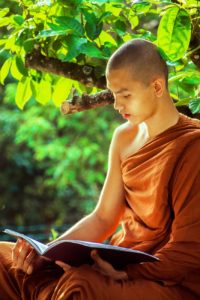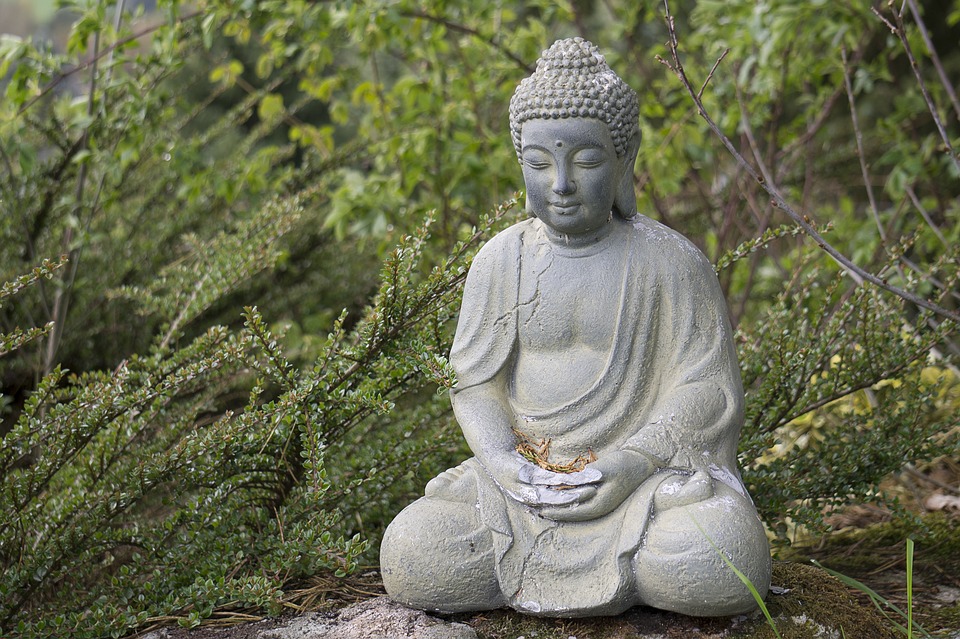How does one convert to Buddhism?
Before we dive into the matter, let’s understand that Buddhism is not really a religion, per se; it is a Dharmic philosophy originally professed by Lord Buddha that eventually became divided into various “schools” spanning multiple cultures, ethnic and language groups. Just like any other philosophy, a “student” of one of the various Buddhist sects can still adhere to a particular religious denomination. For example: there are many Christians, Jews, Hindus and atheists who adhere to the various philosophies of individuals like Hobbes, Locke, Marx, Nietzsche, Gandhi, etc., and they there is no apparent conflict between their religious beliefs and their philosophical beliefs; in a similar vein, there is no real conflict for a Christian, Jew, Hindu or even atheist to follow the teachings of Lord Buddha. Buddhism, for all intents and purposes, does not have a set dogma or canon; and that is what separates it from the label of religion.
Converting to Buddhism
There is no set catechism for “converting” to Buddhism; although those wishing to join a particular Buddhist school (such as Zen or Tibetan) can seek out a group and learn from a spiritual leader or master if the student desires a set structure and discipline. I became a student of Buddhism about five years ago when a friend introduced me to insight meditation and manifestation. Buddhism, collectively, is a philosophy that focuses on the enlightenment of the individual while maintaining a balance between the individual and the world around him/her in with the ultimate goal of liberation (moksha) from the cycle of rebirth and suffering in mind. Becoming a Buddhist is not as easy as reading a book, liking what one reads, and then saying “I’m a Buddhist.” And it is not as easy as twisting your legs into the full lotus position and chanting “om” a couple of times. Rather, becoming a student takes a lot of effort, concentration, meditation, dedication and pure willingness to change one’s life forever. It also takes a little bit of guidance.
Four Noble Truths and the Noble Eightfold Path.
There are two fundamental teachings of the Lord Buddha that a student should be knowledgeable of, however; and they are the Four Noble Truths and the Noble Eightfold Path. The Four Noble Truths teach the student that 1) the world is suffering (dukkha); from the moment we are born to the moment we die, life is suffering, 2) the cause or origin of suffering comes from desire (samudaya), 3) the cessation of suffering (nirodha) comes about by relinquishing our dependence on our desires or cravings, and 4) The Way/the Noble Eight Fold Path (marga) is the way to end suffering.
 The Way consists of eight teachings for developing “good” karma and ultimately ending the cycle of rebirth and suffering and they are the right to view, right intention, right speech, right action, right livelihood, right effort, right mindfulness, and right concentration. The Way can be categorized into three parts or concentrations: 1) wisdom (prajna), which consists of right view (in which one gains knowledge) and right intention (in which one gains liberation), 2) ethical conduct (sila), which consists of right speech, right action and right livelihood, and 3) concentration (samadhi), which consists of right effort, right mindfulness, and right concentration. By becoming versed in the Four Noble Truths and The Way, the new Buddhist student then can apply those fundamental teachings to their meditative practices and interactions with not only others but nature as well to bring about quality change in their lives and the cessation of the facets that contribute to suffering. These two teachings enable the student to become aware, knowledgeable, connected and a steward for others seeking liberation.
The Way consists of eight teachings for developing “good” karma and ultimately ending the cycle of rebirth and suffering and they are the right to view, right intention, right speech, right action, right livelihood, right effort, right mindfulness, and right concentration. The Way can be categorized into three parts or concentrations: 1) wisdom (prajna), which consists of right view (in which one gains knowledge) and right intention (in which one gains liberation), 2) ethical conduct (sila), which consists of right speech, right action and right livelihood, and 3) concentration (samadhi), which consists of right effort, right mindfulness, and right concentration. By becoming versed in the Four Noble Truths and The Way, the new Buddhist student then can apply those fundamental teachings to their meditative practices and interactions with not only others but nature as well to bring about quality change in their lives and the cessation of the facets that contribute to suffering. These two teachings enable the student to become aware, knowledgeable, connected and a steward for others seeking liberation.





